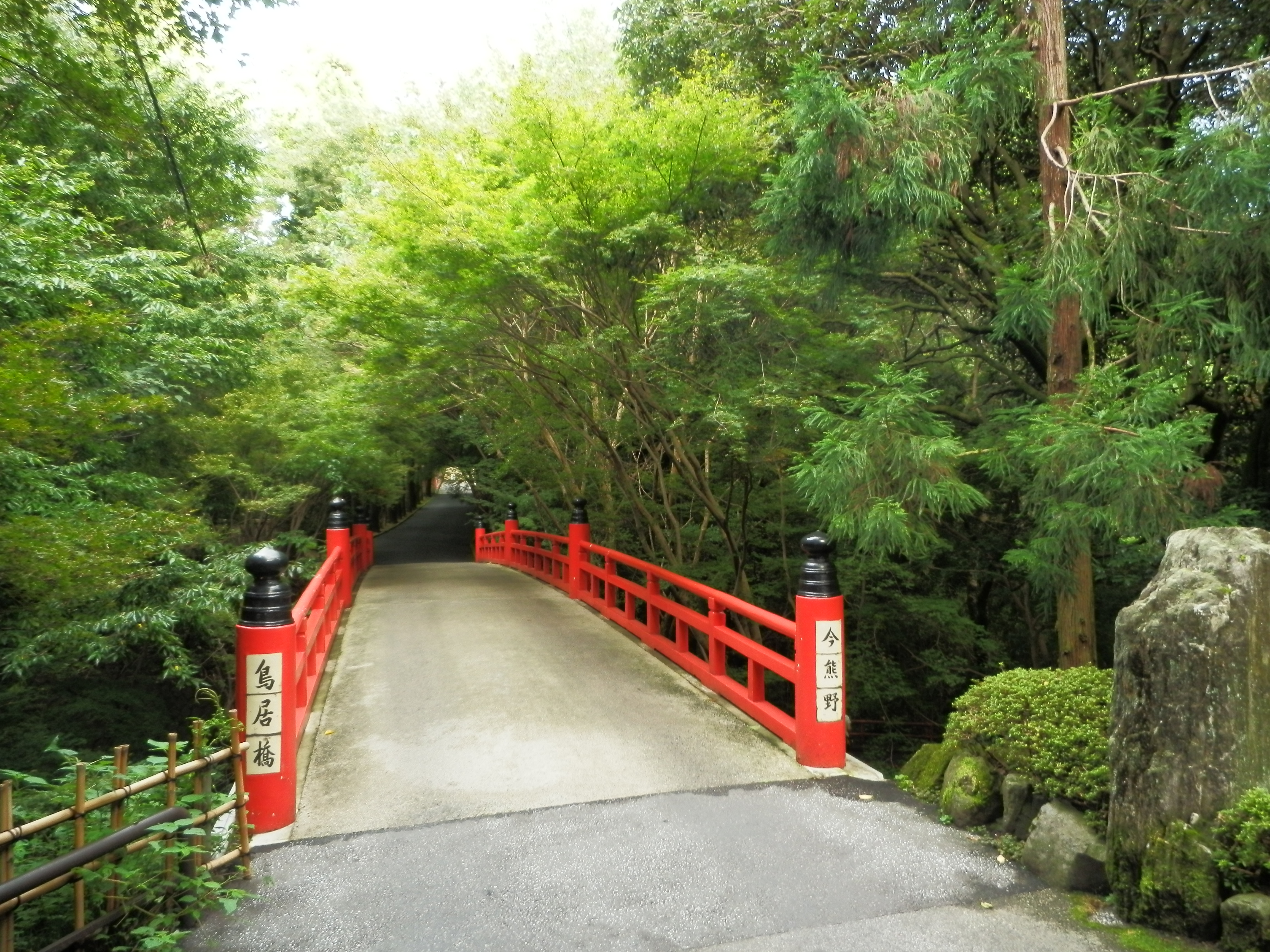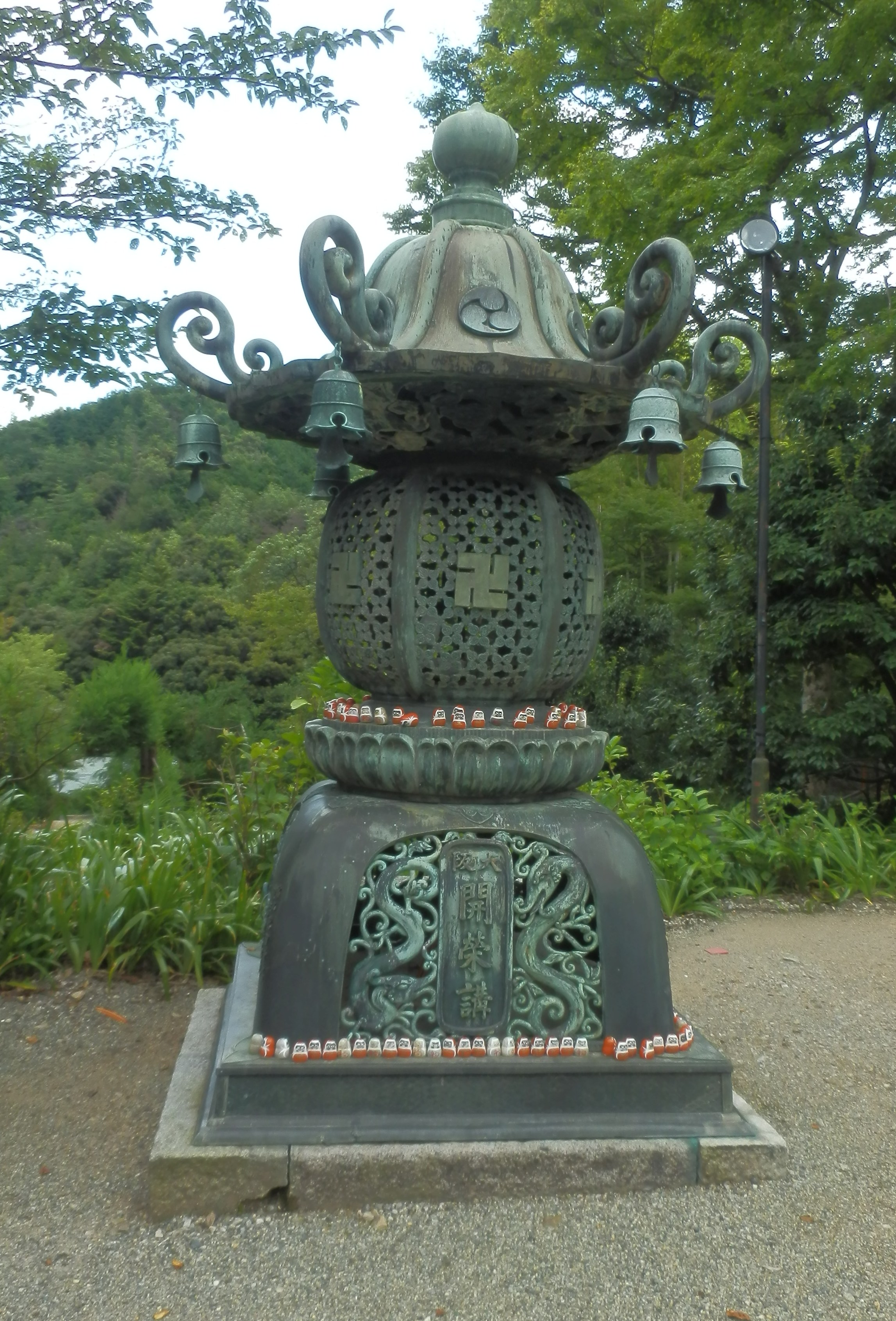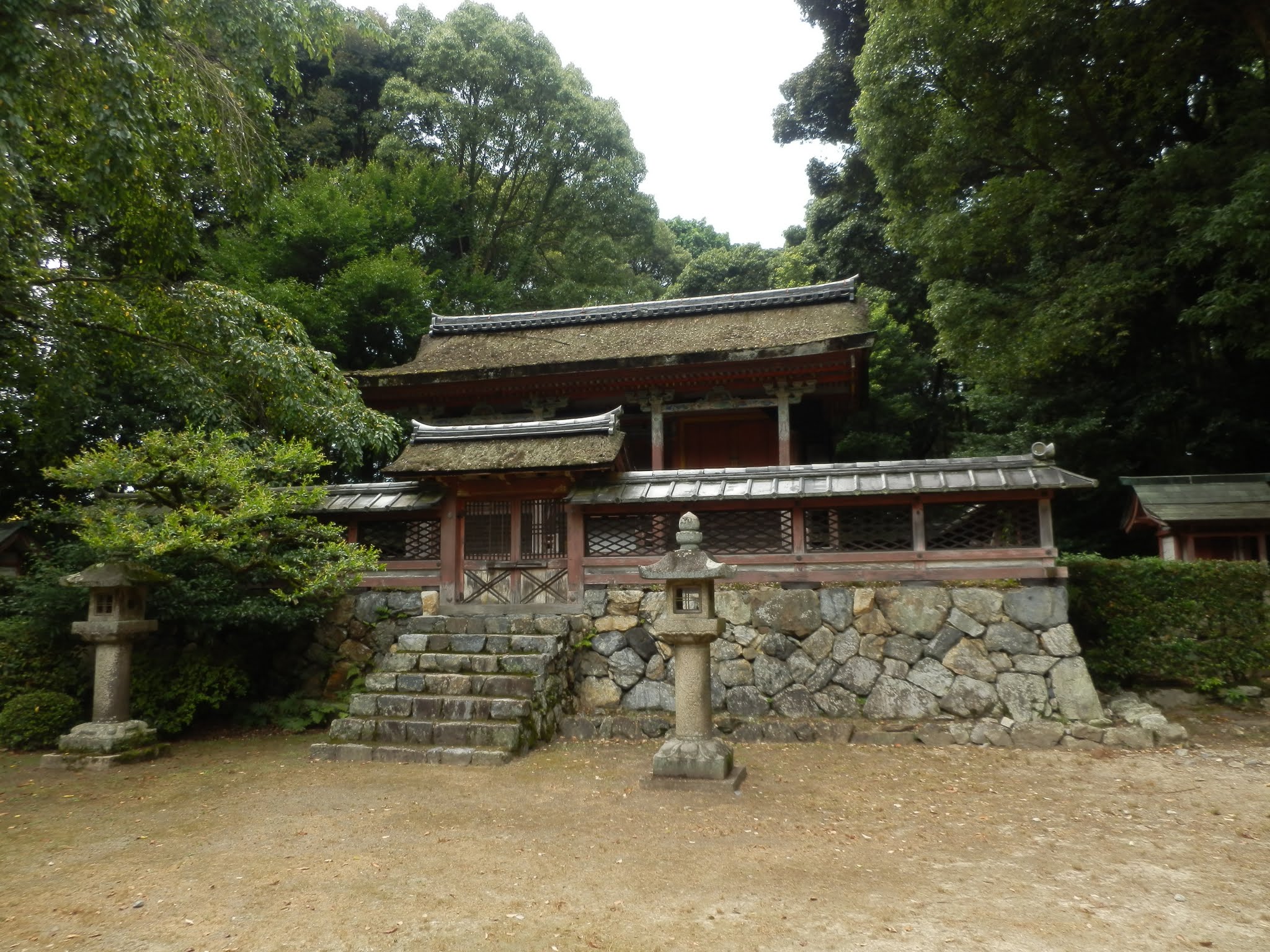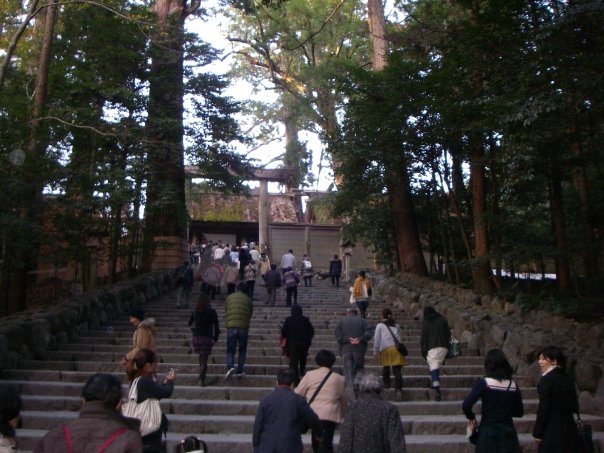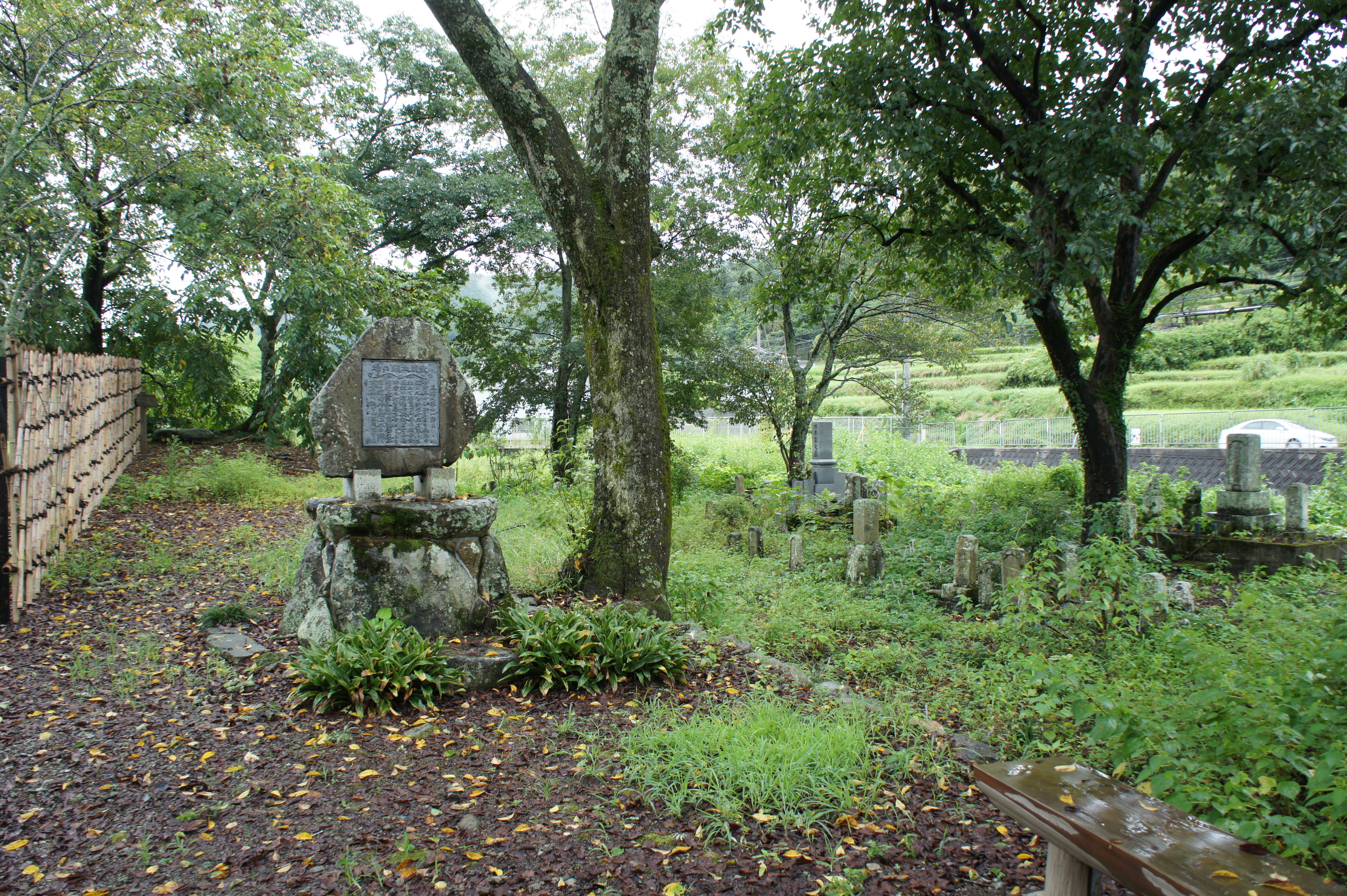Saigoku Kannon Pilgrimage: Imakumano Kannonji & Kodo
今熊野観音寺 (15) and é©å ‚ (19)
This month we have another Kyoto double feature! Temples 15 and 19 of the 33 temple pilgrimage are Imakumano Kannon-ji and Kodo.
First up is Imakumano Kannon-ji, which literally means “present-day Kumano Kannon temple†and it has strong connections to temple 1 (Seiganto-ji), located in Wakayama in the area of Kumano. Imakumano Kannon-ji is so named because in the 1100s, the Emperor Go Shirakawa renamed the area surrounding the temple Ima-Kumano, and the mountain where the temple stands Shin-Nachizan (Nachizan is the mountain on which Seiganto-ji, temple 1, stands) after a vision instructed him to save people the danger of traveling all the way to the real Kumano. The journey was perilous, and especially so during the Gempei wars.
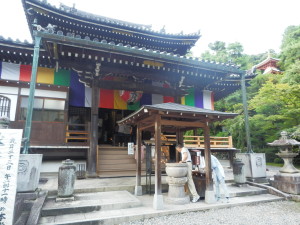 The temple area was destroyed in the Onin Wars of the late 16th Century, and afterwards priests traveled the countryside gathering funds to rebuild it. Many Emperors are buried here, including Emperor Komei, successor of Emperor Meiji.
The temple area was destroyed in the Onin Wars of the late 16th Century, and afterwards priests traveled the countryside gathering funds to rebuild it. Many Emperors are buried here, including Emperor Komei, successor of Emperor Meiji.
The image enshrined at Ima-Kumano is a small, truly secret image of Juichimen (eleven-faced) Kannon. Unlike other images that go on display every 33 years or so, this one is never viewed; it is said to have been carved by Kobo Daishi in the 9th century, and is just 55cm high. Tucked inside this statue is another tiny one of 5cm, said to have been given to Kumano Gongen by Amaterasu, the sun goddess. (Kumano Gongen is sort of like the Shinto version (the native spirit) of the Buddhist deity Kannon, showing the Japanese syncretism of its two religious practices.) The image here is associated with curing headaches since Emperor Go Shirakawa’s debilitating headaches are said to have been cured by this Kannon. Nowadays, people come to pray for relief from headaches as well as protection from disaster and illness.
Because the temple is so associated with the Kumano Gongen, the Shinto manifestation of Kannon, there are elements of Imakumano Kannon-ji’s layout that differ from many of the other temples seen on the route. The temple has no entry gates, but instead a vermillion-colored bridge that echoes the torii gates seen at the entrance to Shinto shrines. Crossing the bridge is an act of purification, and a symbolic motion from the everyday world into the sacred space.
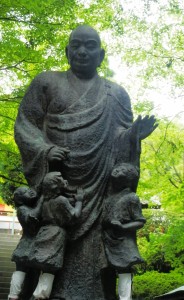 As educators, JETs might be interested in the statue of Komamori Daishi, or child-protecting Daishi. Kobo Daishi opened the first school in Japan that was open to all children (and not just noble-born males). Imakumano Kannon-ji offers many services related to the health and well-being of children. Not far off, you’ll find the statue of Bokefuji Kannon, prayed to by those who wish to prevent senile dementia; this temple is stop number one on a different regional pilgrimage dedicated to this particular Kannon. In the grounds you will also find shrines to the Inari and to Kumano Gongen side by side.
As educators, JETs might be interested in the statue of Komamori Daishi, or child-protecting Daishi. Kobo Daishi opened the first school in Japan that was open to all children (and not just noble-born males). Imakumano Kannon-ji offers many services related to the health and well-being of children. Not far off, you’ll find the statue of Bokefuji Kannon, prayed to by those who wish to prevent senile dementia; this temple is stop number one on a different regional pilgrimage dedicated to this particular Kannon. In the grounds you will also find shrines to the Inari and to Kumano Gongen side by side.
The Hondo is said to be situated on the site of the original temple built in 820, where Kumano Gongen appeared to Kobo Daishi. For this reason, praying in the Hondo is considered especially powerful. The temple is also dedicated to Ebisu, one of the seven lucky gods, and is part of a seven temple pilgrimage around the mountain that takes place each New Year. Our next temple, Kodo, is home to another of them: Jurojin, god of wisdom and longevity.
Imakumano Kannon-ji is a ten minute walk from Sennyuji-michi (泉涌寺é“) stop on bus 202, 207, or 208. It’s also a 5 minute cab ride from Kyoto Station itself, or if you feel adventurous, a 30 minute walk. From Tofukuji station (æ±ç¦å¯º) it is a 15 minute walk.
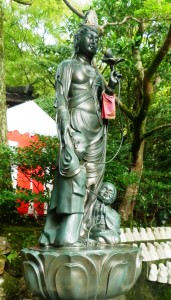 Imakumano Kannon-ji is at the south end of Kyoto city, and Kodo, temple 19, is in the north. Kodo’s formal name is Gyogan-ji, and Kodo is a nickname referring to it as the deer-hide temple. It is the only temple on the route run by a nunnery. Their Senju (thousand-armed) Kannon image, carved from a sacred tree from Kyoto’s Shimogamo Shrine, is viewable once a year. The image is said to grant the wishes of all young girls, but especially those aged 4 (the “shi†connection to death making 4 significant) and 13 (the age when a girl becomes a young woman).
Imakumano Kannon-ji is at the south end of Kyoto city, and Kodo, temple 19, is in the north. Kodo’s formal name is Gyogan-ji, and Kodo is a nickname referring to it as the deer-hide temple. It is the only temple on the route run by a nunnery. Their Senju (thousand-armed) Kannon image, carved from a sacred tree from Kyoto’s Shimogamo Shrine, is viewable once a year. The image is said to grant the wishes of all young girls, but especially those aged 4 (the “shi†connection to death making 4 significant) and 13 (the age when a girl becomes a young woman).
The name Kodo comes from the founding story of the small temple: Gyoen Shonin founded the temple in 1004. He, formerly a hunter, became a priest as an act of remorse when he killed a deer that had a living fawn inside her. It was his vision that led to the cutting down and carving of the sacred tree at Shimogamo Shrine for the image enshrined at Kodo.
 Though Kodo is small, you will find many small shrines within. Aside from a row of the seven lucky gods, there is a small building dedicated to Chintaku-reifujin, also known as the deity of the North Pole Star, the Hokushin Myoken Bosatsu. Sometimes depicted as a warrior, sometimes a celestial angel, Myoken is another instance of syncretism, blending Buddhism, Daoism, Shinto, and a focus on yin and yang. Chintaku Reifujin is considered a manifestation of Kannon. Near the corner, the Gorinto (massive stone thing) represents the five elements of earth, water, fire, wind, and space. Inside is a shrine to the Light King. Next to the Gorinto is a small shrine to Shusse Benzaiten, the Japanese muse who brings success.
Though Kodo is small, you will find many small shrines within. Aside from a row of the seven lucky gods, there is a small building dedicated to Chintaku-reifujin, also known as the deity of the North Pole Star, the Hokushin Myoken Bosatsu. Sometimes depicted as a warrior, sometimes a celestial angel, Myoken is another instance of syncretism, blending Buddhism, Daoism, Shinto, and a focus on yin and yang. Chintaku Reifujin is considered a manifestation of Kannon. Near the corner, the Gorinto (massive stone thing) represents the five elements of earth, water, fire, wind, and space. Inside is a shrine to the Light King. Next to the Gorinto is a small shrine to Shusse Benzaiten, the Japanese muse who brings success.
During Obon in early August, the temple displays the Yurei Ema, a tablet showing a young girl who was once a devotee at the temple. She was cruelly imprisoned after defying her master’s insistence that she not visit the temple and died from cold. Her family left this dedication in order to bring peace to their daughter’s spirit.
Kodo is a 3 minute walk from the Kawaramachi/Marutamachi bus stop, or a 10 minute walk from Marutamachi station on the Keihan line.
Imakumano Kannon-ji’s official website (Japanese): www.kannon.jp
Read more about the Yurei Ema at Kodo here: http://sacredjapan.com/Temple%2019/Legends19.htm
